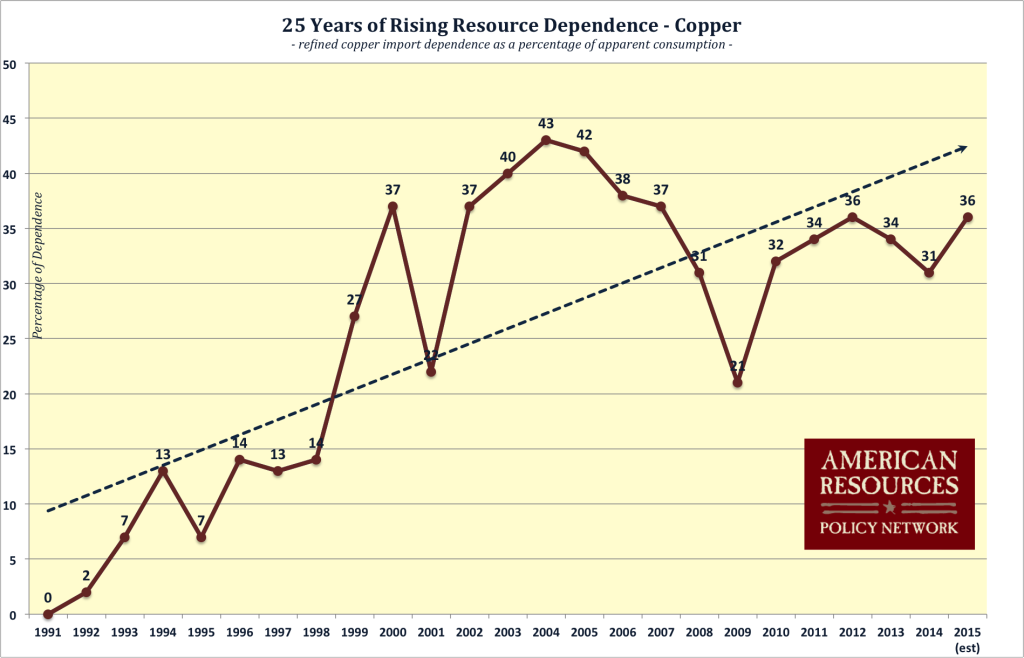If our trip Through the Gateway holds one lesson so far, it’s that old patterns and paradigms are out the window. Advances in technology and materials sciences have changed the applications for many mainstay metals and are fueling demand. As we have outlined, the same applies for numerous rare tech metals, which are primarily sourced as co-product metals in the refinement process for our Gateway Metals Copper, Aluminum, Tin, Zinc and Nickel.
With access to these tech metals being contingent on the availability of their respective Gateway Metal(s), the geopolitical dimension of resource policy becomes all the more important. Not too long ago, a USGS analysis painted a troubling picture, showing that across the board, our reliance on foreign non-fuel minerals has significantly increased over the examined 60-year time frame.
We decided to zero in import dependence percentages specifically for our Gateway Metals, using the last 25 years of data provided by USGS in its Mineral Commodity Summaries. A look at the trend line for our first Gateway Metal, Copper, which provides us with access to Rhenium, Molybdenum, Selenium and Tellurium confirms that the United States’ degree of import dependence for Copper has grown drastically since the end of the Cold War:
 Source: USGS Mineral Commodity Summaries
Source: USGS Mineral Commodity Summaries
This needn’t be. As we have previously pointed out, with our own reserves and at mining projects ready to come online, the U.S. would not only be able to become self-sufficient with regards to meeting Copper needs, but could even position itself to be a Copper net exporter. In the process, the U.S. would also provide our domestic manufacturers with stable access to its co-products, which are some of the key tech metals we’ve come to rely upon to drive 21st Century innovation.
We will review our nation’s import dependence numbers for some of the other Gateway Metals in separate posts, but a look at Copper alone makes clear that it is time for a new, more comprehensive approach to mineral resource policy.




